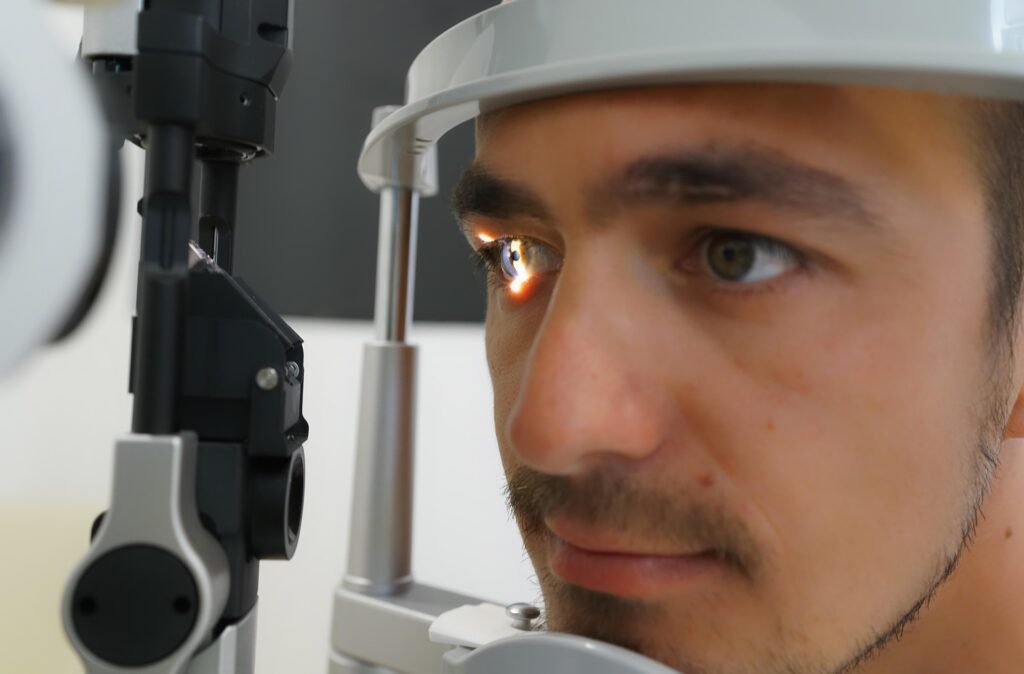
Diabetic retinopathy is one of the most common eye complications caused by diabetes. It happens when high blood sugar levels damage the small blood vessels in the retina—the part of the eye responsible for detecting light and sending signals to the brain. If left untreated, diabetic retinopathy can lead to serious vision problems or even blindness.
Let’s understand what causes this condition, how to detect it early, available treatments, and ways to prevent it.
What is Diabetic Retinopathy?
Diabetic retinopathy is an eye disease caused by long-term high blood sugar levels. It affects the retina, which is the light-sensitive layer at the back of the eye. Over time, high sugar levels can make the tiny blood vessels in the retina leak or block, leading to vision problems.
Both Type 1 and Type 2 diabetic patients can develop this condition. The risk increases the longer a person has diabetes.
Main Causes
The major cause is uncontrolled blood sugar over time. This weakens and damages the small blood vessels in the retina.
Other contributing factors include:
- High blood pressure
- High cholesterol
- Smoking
- Poor diabetes management
- Pregnancy in diabetic women
Warning Signs and Symptoms
In the early stages, diabetic retinopathy may not cause any symptoms. But as the condition progresses, you may experience:
- Blurred or changing vision
- Dark spots or floaters
- Poor night vision
- Empty or dark areas in your sight
- Sudden vision loss (in severe cases)
Since symptoms may not show up early, regular eye checkups are important for people with diabetes.
Types and Stages of Diabetic Retinopathy
There are two main stages:
1. Non-Proliferative Diabetic Retinopathy (NPDR)
This is the early stage. Small blood vessels in the retina start to leak fluid or blood, which may cause swelling in the macula (the central part of the retina). Vision may remain normal in the early stage.
2. Proliferative Diabetic Retinopathy (PDR)
This is the advanced stage. The retina starts growing new, fragile blood vessels that can bleed and cause scar tissue. This can lead to serious problems like retinal detachment or permanent vision loss.
How is it Diagnosed?
An eye doctor can diagnose diabetic retinopathy during a dilated eye exam. Tests may include:
- Retinal examination – To check for damage or leaking blood vessels
- Optical Coherence Tomography (OCT) – To check for swelling in the retina
- Fluorescein Angiography – A special dye is used to highlight blood flow in the retina
Treatment Options
Treatment depends on the stage and severity of the condition. The main goal is to stop or slow the damage to the retina.
1. Managing Diabetes
Keeping your blood sugar, blood pressure, and cholesterol under control is the first and most important step. This helps prevent further damage.
2. Anti-VEGF Injections
Injections like Avastin, Eylea, or Lucentis are used to stop the growth of abnormal blood vessels and reduce swelling in the retina.
3. Laser Treatment (Photocoagulation)
Laser therapy is used to seal off leaking blood vessels and prevent further vision loss. It is commonly used in cases of macular edema or PDR.
4. Vitrectomy Surgery
This surgical procedure is needed when there is bleeding inside the eye or retinal detachment. It removes the blood-filled gel (vitreous) and repairs the retina.
Prevention Tips
While diabetic retinopathy can’t always be prevented, the risk can be greatly reduced by following these tips:
- Monitor and control your blood sugar regularly
- Get your eyes checked at least once a year
- Manage your blood pressure and cholesterol levels
- Avoid smoking and alcohol
- Follow your doctor’s advice on diabetes care
Final Thoughts
Diabetic retinopathy is a serious condition, but with timely treatment and good diabetes management, vision loss can often be prevented or minimized. If you have diabetes, make regular eye checkups a part of your healthcare routine—even if your vision seems normal. Early detection is the key to protecting your eyesight.
Your eyes deserve care—don’t wait until it’s too late.